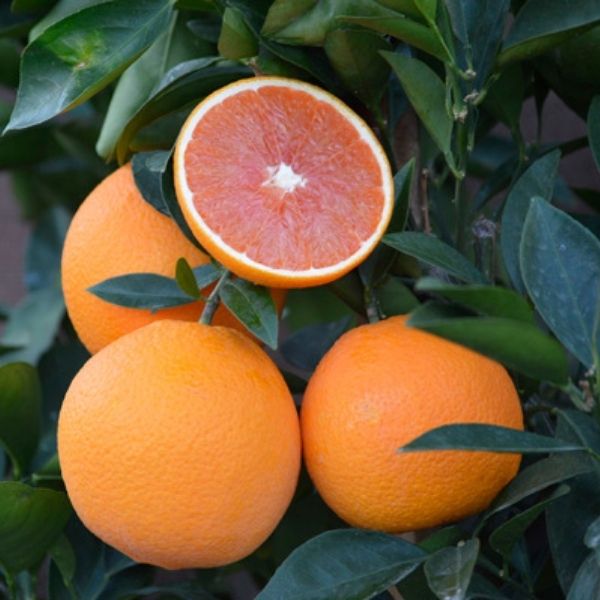How to grow an orange tree and enjoy low-maintenance harvests of sweet, fragrant fruits
Discover why orange trees can be a simple choice for novice gardeners
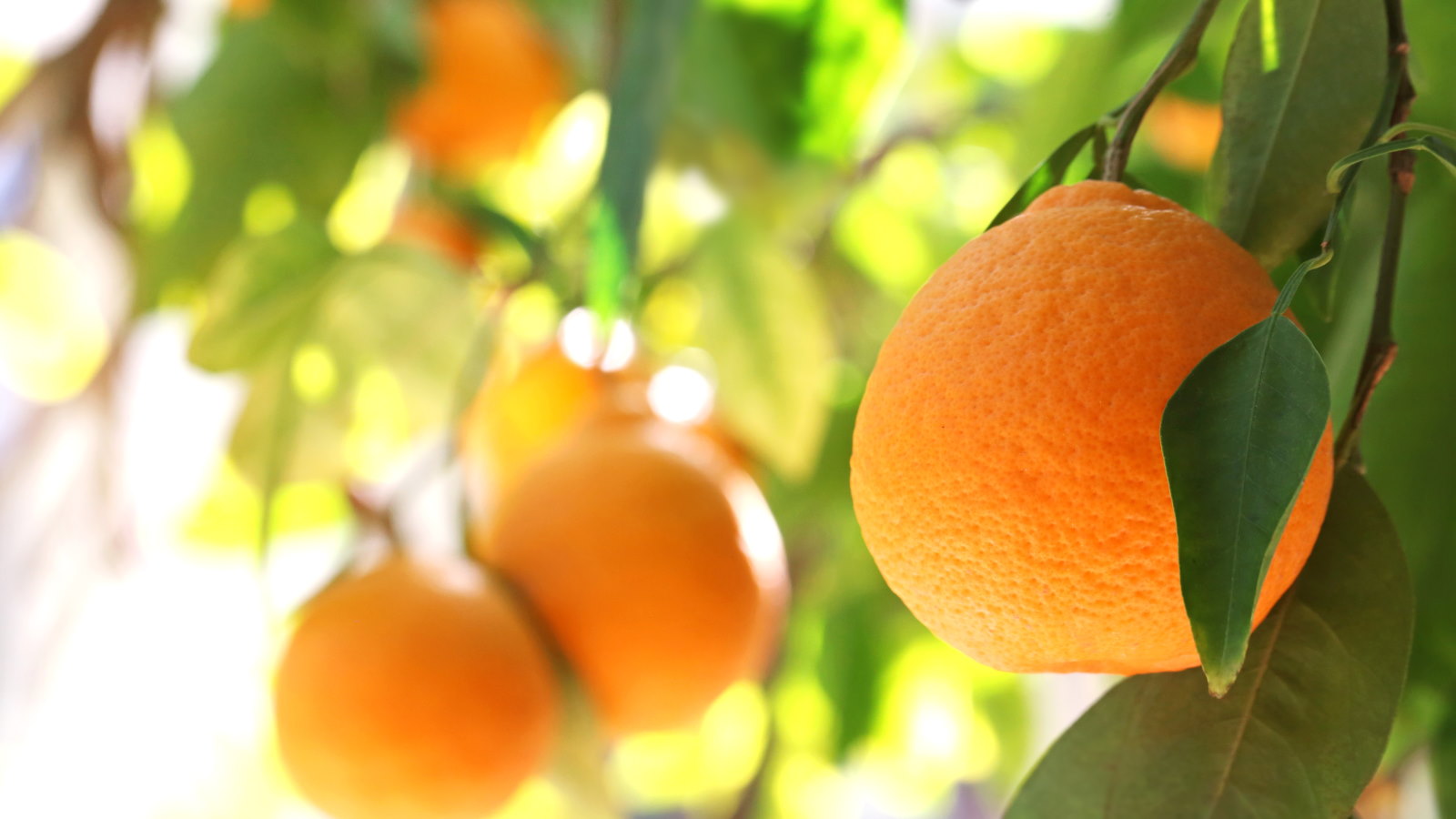

Enjoying a fresh, sweet, fragrant orange plucked straight from the tree sounds blissful. That dream can be a reality as orange trees can be grown in gardens, containers, or indoors. With that in mind, this guide looks at how to grow an orange tree at home.
Oranges are a type of citrus tree grown globally for fragrant flowers - the orange blossom is the state flower of Florida - and sweet fruits. They love warmth but are sensitive to cold weather, meaning they are often grown in pots to be brought indoors for the colder months.
They can be one of the easiest and best fruit trees to grow at home, offering a fantastic combination of beautiful blossoms and delicious fruit. If you want to discover how to grow an orange tree, we reveal all you need to know to succeed. With expert tips to help you on your journey from planting to watering, feeding, pruning, and harvesting oranges.

How to grow an orange tree - an expert guide
Orange trees (Citrus sinensis) can grow up to 30 feet tall, however, there are dwarf types to grow at home if you want to grow them in pots or as indoor fruit trees. There are different varieties of orange trees to grow, including navel oranges, Valencia oranges, and blood oranges, and oranges are self-fertile fruit trees - so you can get fruit with just one tree.
The good news is that orange trees can be easy fruit trees to grow. Maureen Wright, fruit tree expert at Fast Growing Trees, reassures: ‘Orange trees are an excellent choice for beginning gardeners because they’re relatively easy to grow in the right growing zones.
‘With plenty of sunlight, proper watering, a little fertilizer, and light pruning, your orange tree will thrive and reward you with fragrant blossoms and fruit.’
With that in mind, let's start examining how to grow an orange tree by looking at where best to plant them.

Maureen has been a Certified Oklahoma State University Master Gardener since 2012 and is working on her ISA Arborist Certification. Her background in social work led her to an interest in horticultural therapy training and she spends a lot of her time working with at-risk youth and adults working on community garden projects.
How to grow an orange tree - planting tips
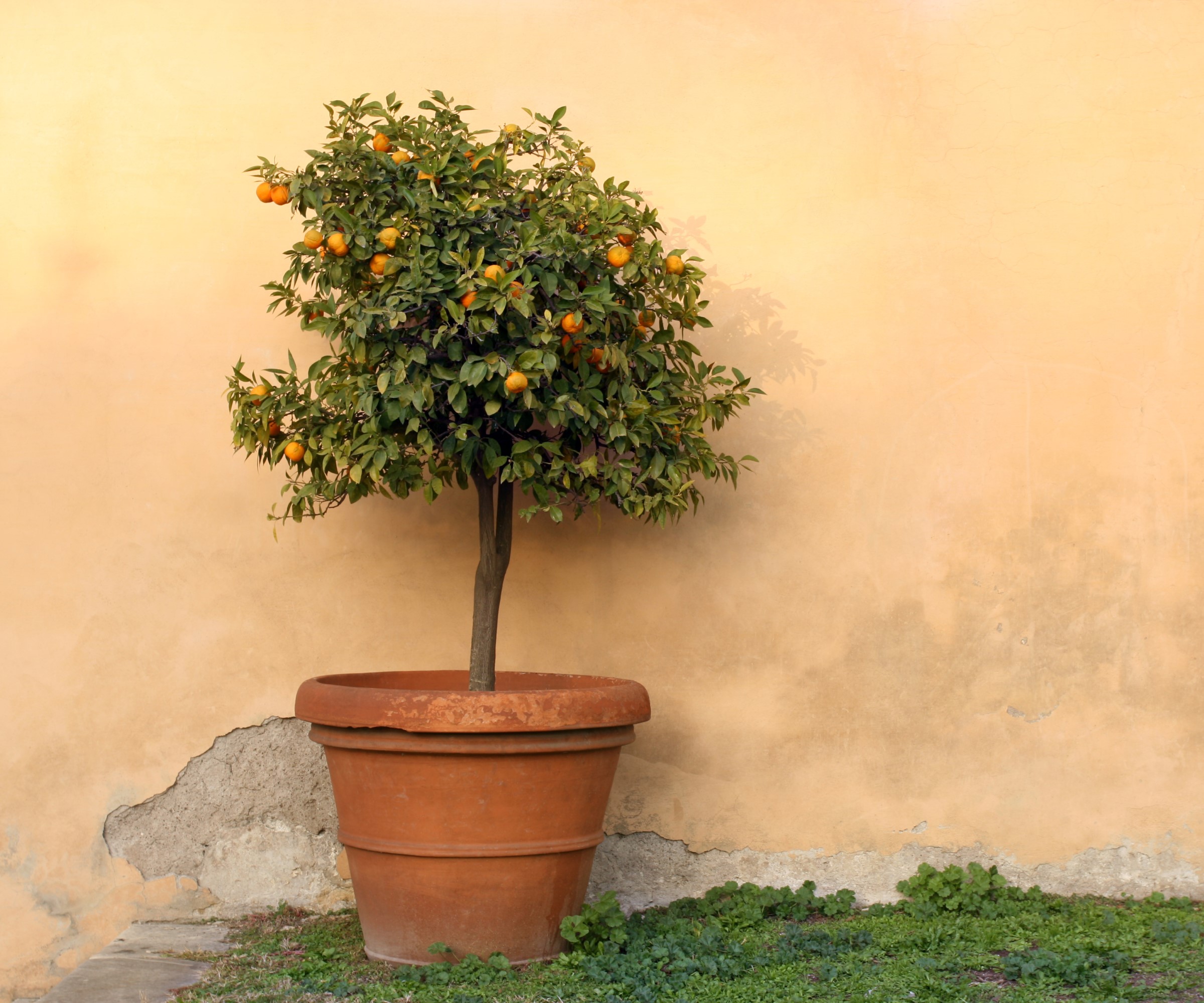
Orange trees are available to buy in containers from nurseries, garden centers and online - which is the best way to plant these fruit trees. Orange trees can be grown from seed, however, it requires a lot of patience and there is no guarantee the variety will come true from seed.
Plant orange trees in spring, after the risk of frost has passed, or in summer. Those in warmer US hardiness zones can plant trees year-round. It won’t surprise you to know that orange trees thrive their best in full sunlight. They want at least 6-8 hours of direct light daily to produce fruit and to be planted in a sheltered position.
From US hardiness zone 9 to US hardiness zone 11, plant the fruit trees outdoors in the ground. Those in cooler climates are advised to grow the fruit trees in pots, so they can spend the summer outdoors and be moved indoors when the temperatures drop. Orange trees struggle when temperatures get below 50-55°F.
Orange trees prefer fertile soil types and the site must drain well. ‘For soil, they prefer well-draining, sandy, or loamy soil that’s slightly acidic to neutral,’ adds Maureen Wright. ‘Avoid heavy, clay-rich soils that hold water, as orange trees dislike soggy roots.’
The fruit trees put out deep root systems and large varieties need a space of around 20 feet, which drops to 10 feet for dwarf varieties when planted in the ground. After planting orange trees, there are a few key maintenance areas to get right.
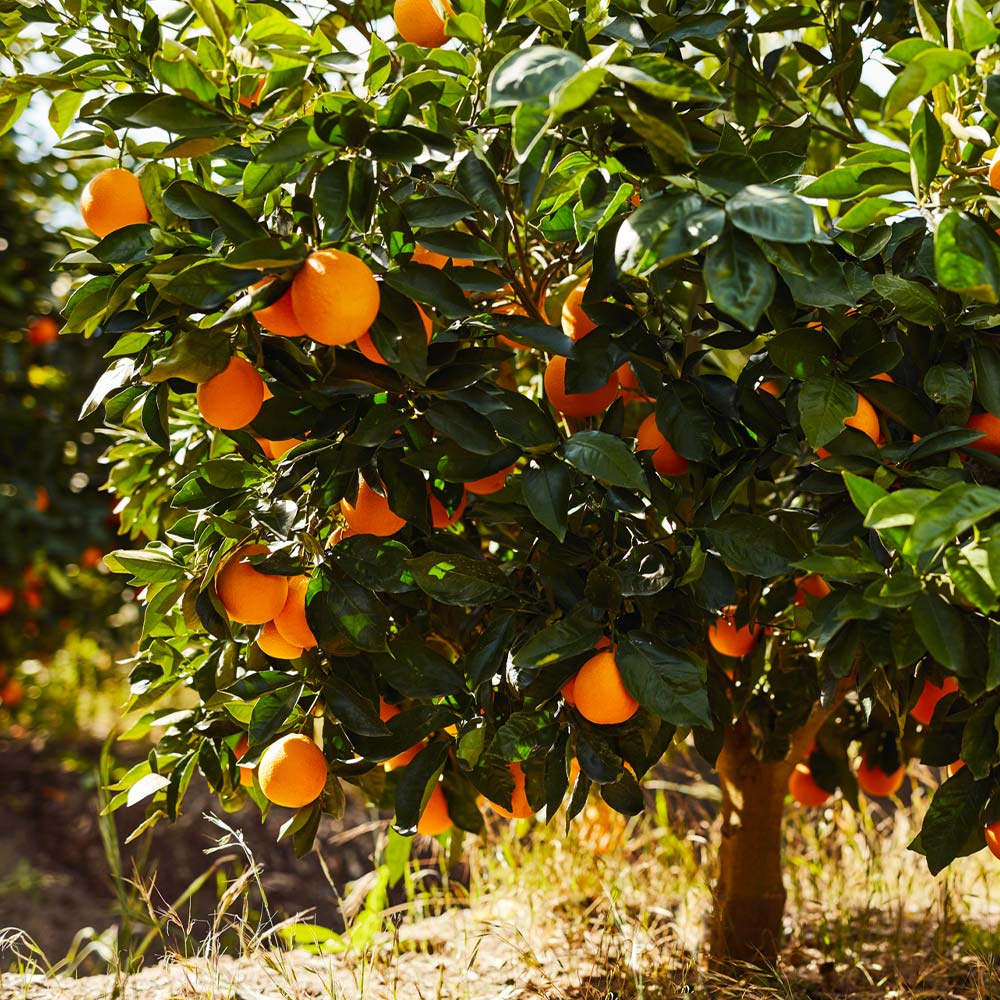
A highly popular variety, Navel Oranges are very sweet, simple to peel, and seedless. Trees can reach 8-12 feet and will grow outdoors in zones 8-11 or as a patio fruit tree in zones 3-11.
How to grow an orange tree - care tips
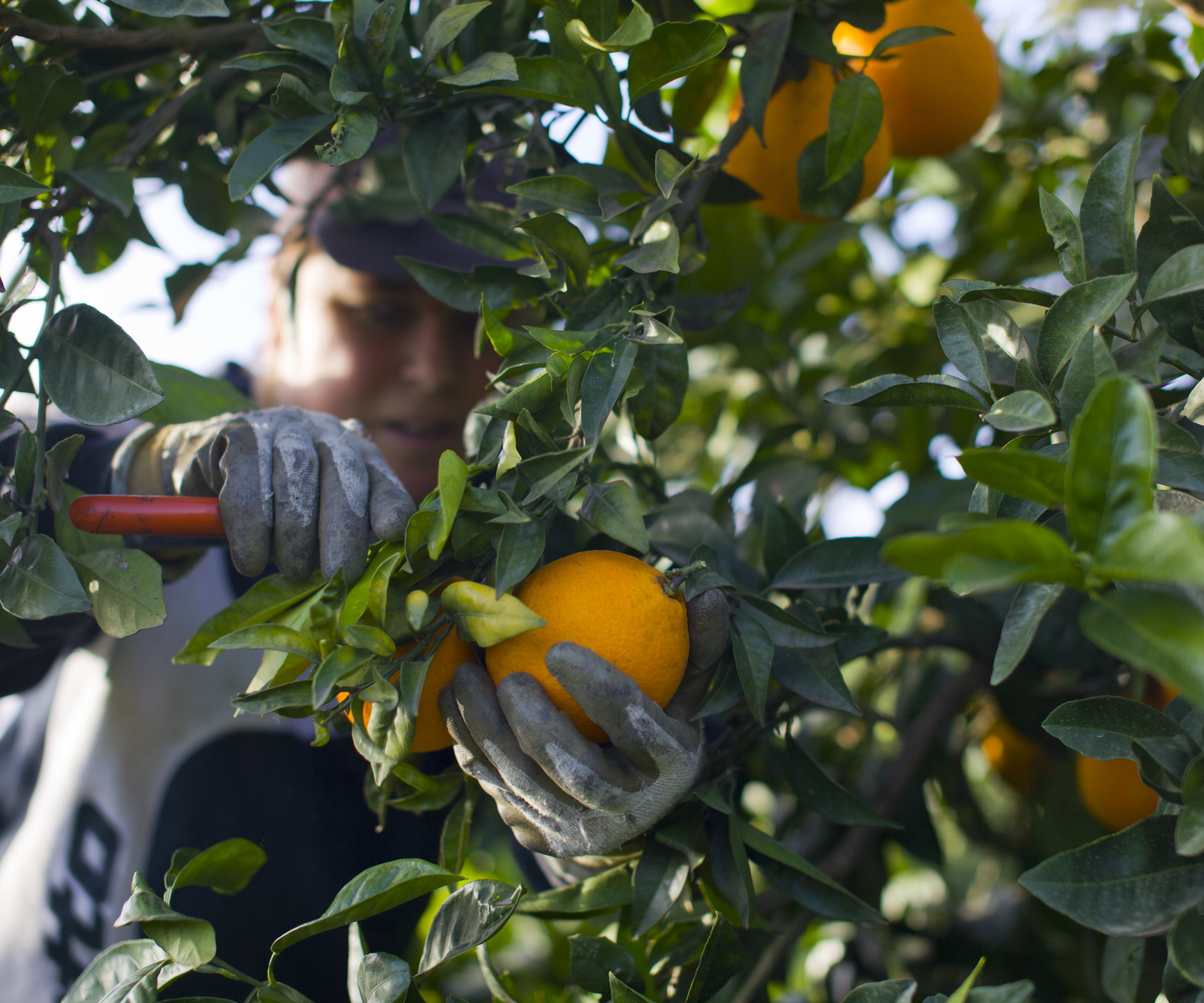
- Watering - Young orange trees need consistent moisture and will benefit from regular deep watering for the first year. Despite the need for consistent soil moisture levels, around an inch of water per week, be careful watering citrus trees as they do not want to sit in overly sodden soil. ‘The key is allowing the soil to dry slightly in between watering,’ recommends Maureen Wright. ‘Mature trees are more drought-tolerant but still appreciate thorough watering during dry spells.’ A soil moisture meter, available at Amazon, can help reveal when to water plants and avoid the perils of overwatering, such as root rot. Orange trees will need more water during summer and take extra care to regularly water plants in containers. Water pots until the water flows out the drainage holes in the bottom.
- Fertilizing - Regular feeding is key to keeping orange trees healthy and productive. Specific fertilizers for citrus trees contain all the essential nutrients orange trees need. An example of such a specially formulated feed is this citrus and fruit tree fertilizer at Amazon. Such feeds should be given to trees three to four times a year. Fertilizing fruit trees in spring and summer is particularly important as orange trees are actively growing at this point. A lack of nutrients or overwatering can be indicated by citrus leaves curling.
- Pruning - Orange trees do not require lots of pruning, but understanding how and when to prune the fruit trees keeps them healthy and shapeful. The ideal time for pruning orange trees is in late winter or early spring and the trimming focus needs to be on removing dead, damaged, or diseased branches along with any branches that cross or crowd the center. Stick to the recommendations outlined and do not make the fruit tree pruning mistake of being heavy-handed, as heavy pruning can overly stress an orange tree.
- Harvesting - The time to pick oranges will vary depending on the variety of trees you are growing. For example, navel oranges are ready to harvest from November to June. Blood oranges also ripen in winter while Valencia oranges are ready to pick from March to October. A ripe orange will have a rich, consistent skin color and a sweet, citrusy fragrance. Fruits can be grasped and gently twisted loose from the tree or snipped away with a pair of gardening snips - such as these micro-tip garden scissors at Walmart - or a small knife. Oranges will not continue to ripen once picked from the tree and can be stored in a refrigerator for a couple of weeks.
FAQs
Can I grow an orange tree indoors?
Orange trees can prosper grown indoors, provided they have the right heat and light levels. For example, they need lots of sunlight by being placed in a conservatory, porch, or by a sunny window, and warm temperatures between 60-90˚F. Orange trees growing indoors will benefit from being regularly misted to increase the humidity levels and need to be placed away from cold drafts or radiators and heaters that can dry the air.
Can you grow an orange tree in a pot?
Orange trees can be one of the easiest fruit trees to grow in pots. This opens up the possibility of growing an orange tree on a deck, patio, or balcony. Dwarf varieties of oranges are best suited to growing in pots, such as this Calamondin Orange Tree at Fast Growing Trees which is a cross between a mandarin and a kumquat which grows up to eight feet. Choose a container a few inches larger than the root ball and transplant the tree into larger containers as it grows. Water plants regularly to ensure the soil remains consistently moist, but not waterlogged. Check the moisture levels 2-3 inches under the soil surface using your fingers or a moisture meter.
Mature citrus trees are more drought-tolerant than other fruits but will still benefit from regular watering during dry spells. So what is the most drought-tolerant fruit tree? It is fig trees that are best suited to drier gardens as they best handle lower moisture levels.
Both pomegranates and olive trees are also very drought-tolerant once established, however, any fruit tree will produce a better crop with regular deep watering during dry spells.
Sign up to the Homes & Gardens newsletter
Design expertise in your inbox – from inspiring decorating ideas and beautiful celebrity homes to practical gardening advice and shopping round-ups.

Drew’s passion for gardening started with growing vegetables and salad in raised beds in a small urban terrace garden. He has worked as a professional gardener in historic gardens and specialises in growing vegetables, fruit, herbs, and cut flowers as a kitchen gardener. That passion for growing extends to being an allotmenteer, garden blogger, and producing how-to gardening guides for websites. Drew was shortlisted for the New Talent of the Year award at the 2023 Garden Media Guild Awards.
-
 The 5 biggest design mistakes I have made in the last 20 years of decorating and renovating – and what I have learned from them
The 5 biggest design mistakes I have made in the last 20 years of decorating and renovating – and what I have learned from themLife is all just trial and error, or at least, the way I've been decorating has been
-
 Diane Keaton's former Lloyd Wright-designed home is a mid-century modern treasure trove – it's listed for $12.8 million
Diane Keaton's former Lloyd Wright-designed home is a mid-century modern treasure trove – it's listed for $12.8 millionThe actress purchased an iconic property in the Pacific Palisades, which she lovingly renovated – today, it's as timeless as ever (and in need of a new owner)

